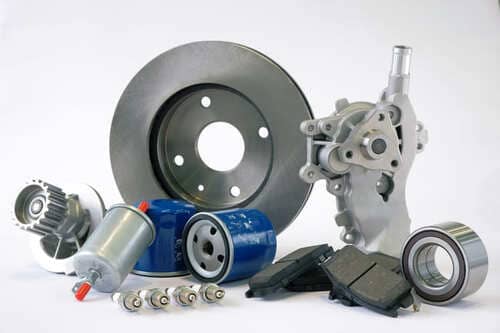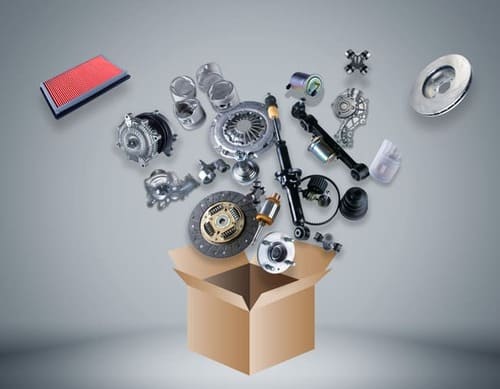
Is the OEM or aftermarket better?
With so many different products to choose from, it has become more difficult to make swift decisions for DIY automotive repairs and upgrades. Often you are left with a choice: do you spend more to get the new car part for your vehicle model or do you take a chance and buy a more affordable aftermarket version?
Knowing the advantages of both types can help you make more cost-effective decisions when choosing spare parts and accessories for your car. That’s why we’ve laid them out for you in the article below.
What are OEM parts?

Simply put, OEM parts are those made by the same manufacturer who produced the parts that were originally installed on the vehicle as it was being assembled. They therefore meet the exact dimensions, specifications, and standards as the original components. However, it is often the case that the carmaker gets an external manufacturer to make specific parts for them, meaning that they don’t always feature the carmaker's branding - unlike “genuine” parts.
What are aftermarket parts?
Aftermarket parts are spare car parts that have been made by other manufacturers and designed to match the specifications of the original parts of several vehicle models. People often hesitate to purchase aftermarket products as there is a risk that the components won’t be compatible or won’t meet the same quality standards.
However, nowadays, there are a number of highly trusted and successful aftermarket brands which offer the same performance as OEM brands at a fraction of the price. Some buy these products to add extra features to the vehicle or for tuning purposes.
While these parts may not offer the same security as those from the original manufacturer, they could help you save a significant amount if you know where to look. The main thing is that you double check their compatibility with your specific vehicle using data such as the part dimensions, OE number, or your VIN. Make sure to only purchase from trusted suppliers and brands.
OEM vs aftermarket
Are OEM parts truly better than aftermarket ones? It really depends on the specific part and what your priorities are. Let’s compare the pros and cons of both: oem vs aftermarket parts.
OEM pros and cons
- Guaranteed compatibility with the vehicle – the products match the exact specifications of the vehicle model.
- Easy to select – the part is pretty much already selected for you; you can simply ask a local dealer for the original one.
- Greater quality assurance – the product should provide the same quality and performance as the part that was originally installed at the factory.
- Standard warranty – most OEM parts come with a warranty of 1 year or more.
- Higher prices – the quality guarantee comes with a price, and sometimes even refurbished original components cost more than the aftermarket options.
- Not as easily accessible – the parts may only be available through the manufacturer or authorised dealers and specific retailers.
- Less choice – this can be a disadvantage for those looking to upgrade their vehicle or add new features.
- Not always higher quality – you aren’t necessarily getting the best value for your money. Many aftermarket brands offer OE-quality or OEM components at lower prices, and some even exceed the standards of the original manufacturer.
Aftermarket pros and cons
- More affordable – the parts are usually less expensive and there is normally something for every budget (budget, mid-priced, premium). It is worth comparing prices online.
- More variety – you can choose what is best for your needs rather than having to fit your needs around a specific product.
- More availability – you can find aftermarket products almost anywhere, both in physical and online shops, as well as service stations and garages.
- Competitive quality – more variety, means that there are more brands competing with each other to develop more advanced, high-performance products.
- Risk of being incompatible – you are responsible for finding parts that fit and function for your specific vehicle model. Mistakes are easy to make if you don’t know what to look for.
If you want to find the right ones for you, you can start by looking at online product catalogues for your vehicle make and model, e.g. VW parts catalogue, or enter specific details online, including the VIN or OE part number. - Quality may vary – the quality can vary significantly from brand to brand, and not every product is designed to be durable.
- May not be protected by a warranty – not all aftermarket manufacturers offer a standard warranty.
How to tell OEM parts apart from aftermarket parts

You can often spot an original part by the part number, as well as the product serial number and the hologram on the packaging. They should match those of the original manufacturer. Buying parts from a dealer or directly from the vehicle/original manufacturer means that you’ll likely receive the original components.
The main identifiable difference between OEM parts and aftermarket parts is that OEM parts are only produced by the manufacturer of the original factory-fitted parts, whereas aftermarket products can be made by anyone. Some of them may also look visibly cheaper and be made with lower quality materials than the originals.
How to find the OEM part number for my car
An OEM number is a unique code generated by the original manufacturer of the part that allows you to identify the original part. It can also be used to find similar car parts from different brands that meet the same specifications. For example, let’s say you want to save money by buying aftermarket wiper blades. You can find compatible parts by matching the OEM number with those listed in the product descriptions.
However, first you’ll need to find out what the part number is. The number can be found on the original part itself or you may need to contact the manufacturer or a local dealer to make a direct enquiry. Sometimes, you only need to enter the VIN online to find the correct part numbers.
TOP products on the subject:




































